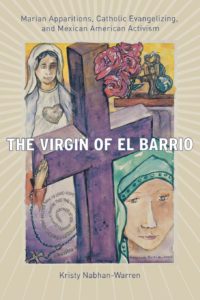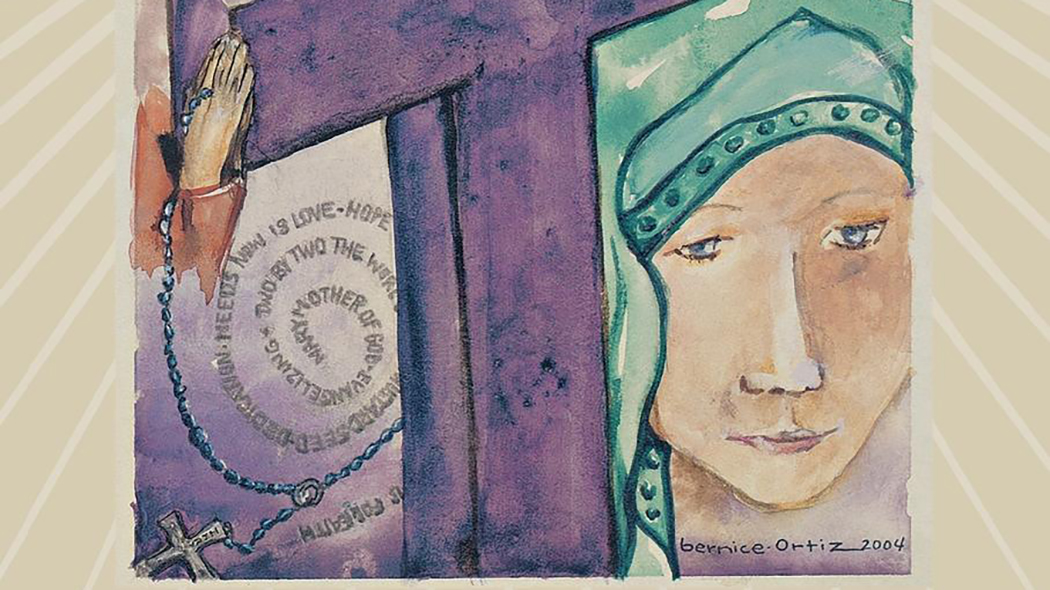—Kristy Nabhan-Warren
RIP Reyes Ruiz Jr., aka “Little Rey”
I came for life and returned for death. My fascination with Latino/a religion and borderlands cultures started with a youthful exuberance and fascination with a woman visited by the Blessed Virgin Mary and her dynamic community of believers. With the hundreds of women and men who came to the painstakingly hand-crafted desert shrine to pay their respects and to ask for favors. Petitions. Prayers. Promises. Love.
I began “researching” Señora Estela Ruiz, her family, and this community of devotees back in 1992. I wrote my MA thesis, turned dissertation, turned book, on Estela, her family, and the meanings of their religious place. I thought then that I would share the stories I had been told, the faith I witnessed first-hand. I felt like the world needed to know about the good that was happening in this family, this neighborhood, this city. I felt in my gut that what was going on was special and important. The oral histories I gathered, the observations I made, all told me that the study of religion is not only relevant to our contemporary world, but vital. Why? Because if we do not understand why people believe then we miss what for millions of humans is the core of their reason to be, their reason to live. Their moral touchstone and compass for, as the existentialist anthropologist and my mentor Michael D. Jackson has written, their being-in-the-world.
The story of the apparitions of the Virgin Mary which appeared to Estela is a deeply human one and has touched many lives. I have long thought that the important question to ask is not whether or not I “believe” in the apparitions but why so many people believe. What draws them to this space and what makes it sacred to them? How does belief, in this case in Marian apparitions, affect people in their everyday lives? Returning to South Phoenix for me was truly coming home, to the place where I came of age in my understanding of why belief matters, why presence matters, why community matters. What happens in this shrine space is real and it is true. I believe because I see belief-in-action all around me. I do believe.
I have stayed in touch with la familia Ruiz on Facebook and in person. For all of my concerns and worries about social media’s algorithms and ways to make our world smaller, I’ll admit it has been a fruitful medium to see what has been going on with my adopted familia in South Phoenix since my move back to the Midwest. I learned from my friend Norma last winter via Messenger that her husband Reyes Jr. had died from diabetes-related complications. When I received the Facebook invite to celebrate Reyes’ life at a backyard shrine memorial service and mass at St. Catherine of Siena, my mind and heart were flooded with memories. Memories of Little Rey and Norma welcoming me, then a poor Ph.D. student in Indiana, to their humble home in South Phoenix to live with them while I conducted my research. It was Reyes’ mom, Estela, who set it up. We had grown close when I was interviewing her for my MA thesis for Arizona State. So Estela figured, what better way for me to understand the Blessed Virgin Mary, the family’s devotions, and the ministry that had sprung up, than to live in the thick of it, within yards of the backyard holy place. She was right.
For those of you reading this who have engaged in ethnography, or a long-term journalistic assignment where the “project” is no longer merely a project but something much more—a form of human relationships—well, then I reckon you know the deep attachments that are formed with the women and men you “interview” for your research. I’ll bet you have shared many a meal, sipped a Coca Cola or a cerveza or two, and have experienced a transformation or two. For me, the anthropology of religion, engaging in ethnographic research, is a humanistic endeavor, one that cannot be captured in graphs, charts, or the papers, essays and books that we write. The importance of studying religion is, to paraphrase my friend and colleague Leigh Eric Schmidt at an IUPUI-sponsored biannual conference in Indianapolis several ago, that “at the end of the day perhaps we can understand people just a little better than we do.”
I returned to the little shrine in South Phoenix, Arizona for the celebration of life and funeral of Reyes Ruiz, Jr. The air burned my face with its intense heat, just as I remember it did twenty-five-plus years ago. It is the feeling of a 350-degree oven being opened and the heat hitting your face. Desert dwellers are used to it, and I must say that the heat and lack of humidity compared with Midwestern humidity is comforting. The mesquite trees emitted their welcome pungent scent, eliciting feeling of peace at being in the presence of so many believers who gathered to pray and to hope for better lives. I was back home.
Connecting with these people in this space helped me understand why the study of religion, why the study of cultures outside our own comfort zones, is not only important, but essential to the continued flourishing of our society. This white Midwestern woman, the great-granddaughter of Lebanese-Syrian refugees, had her life impacted forever by stepping outside of her cultural, linguistic, and religious comfort zone and was forever changed. I became committed to the kind of research and teaching that tries to build bridges, to see the ways we are all connected as residents of this vast planet. Each of us needs our own South Phoenix, metaphorically-speaking. We all need to find a place that feeds our soul but that also challenges us to do better. What I learned in South Phoenix is to listen more carefully, to slow down, to drink in the desert landscape and to wonder at the environment around me. I learned about hardship and suffering, as well as triumph.
For my 21-year-old self, it was the gift of a lifetime, one I had not been privy to in the classroom setting. What I learned in South Phoenix are lessons that I carry with me each day as I seek to forge paths of empathy and understanding among my Midwestern kith and kin. Now in my late 40s, my hope for my children, my students, and our youth is that they have interfaith and cross cultural opportunities in their lives that push them to grow, to have empathy and understanding for those who have a different religion, family structure, and country of origin from them. Rest in Peace Rey. You lived a life well lived and you made your faith work for you, your family, and your community. I came home to South Phoenix to celebrate your life and what you stood for. Thank you for your deep and abiding humanity and for what you taught me and so many others. RIP Little Rey, a man who taught this naïve ethnographer much about what it means to have faith.
 Kristy Nabhan-Warren is professor of religious stides at The University of Iowa. She is the author of The Virgin of El Barrio: Marian Apparitions, Catholic Evangelizing, and Mexican American Activism.
Kristy Nabhan-Warren is professor of religious stides at The University of Iowa. She is the author of The Virgin of El Barrio: Marian Apparitions, Catholic Evangelizing, and Mexican American Activism.

